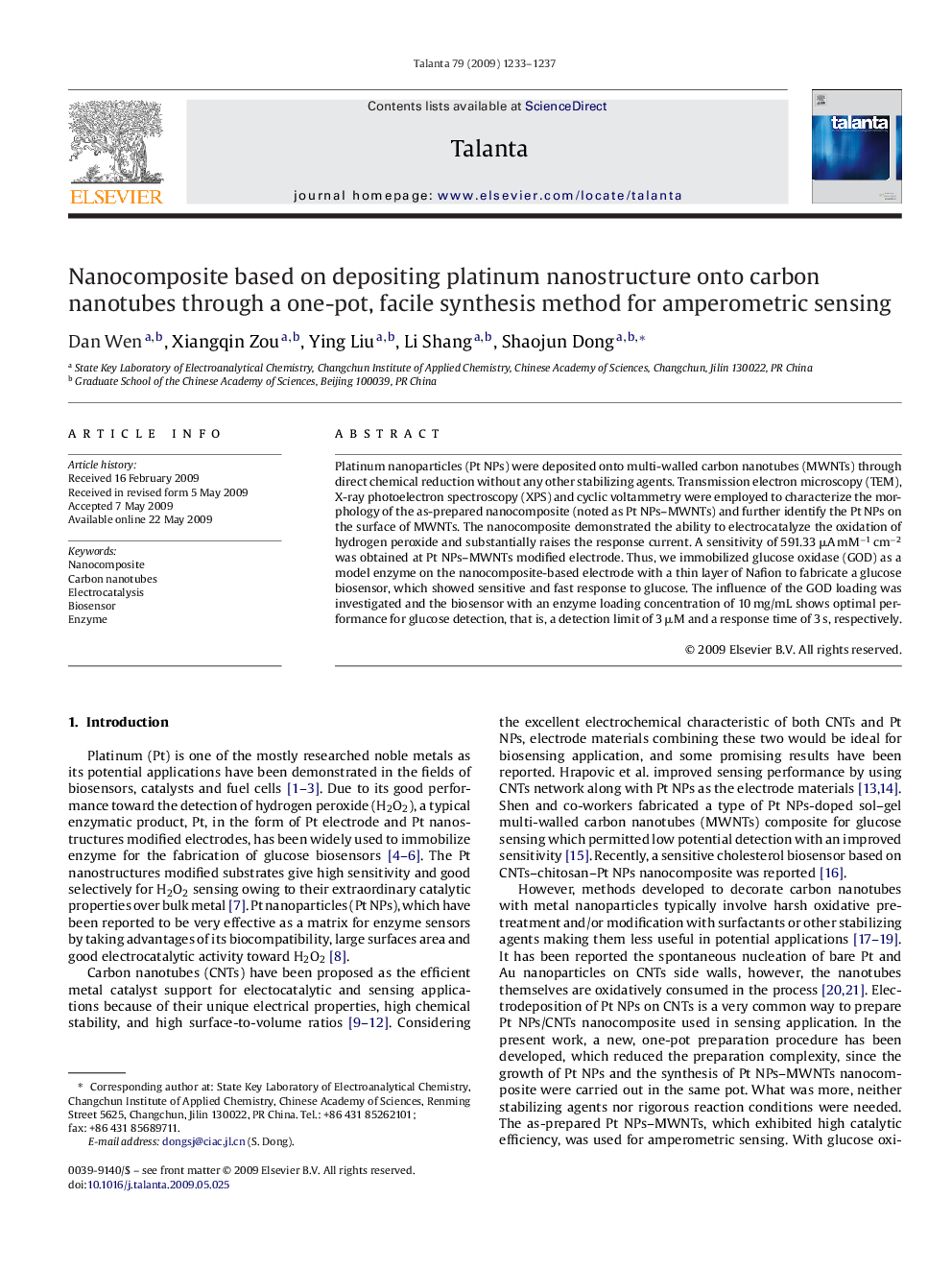| Article ID | Journal | Published Year | Pages | File Type |
|---|---|---|---|---|
| 1246815 | Talanta | 2009 | 5 Pages |
Platinum nanoparticles (Pt NPs) were deposited onto multi-walled carbon nanotubes (MWNTs) through direct chemical reduction without any other stabilizing agents. Transmission electron microscopy (TEM), X-ray photoelectron spectroscopy (XPS) and cyclic voltammetry were employed to characterize the morphology of the as-prepared nanocomposite (noted as Pt NPs–MWNTs) and further identify the Pt NPs on the surface of MWNTs. The nanocomposite demonstrated the ability to electrocatalyze the oxidation of hydrogen peroxide and substantially raises the response current. A sensitivity of 591.33 μA mM−1 cm−2 was obtained at Pt NPs–MWNTs modified electrode. Thus, we immobilized glucose oxidase (GOD) as a model enzyme on the nanocomposite-based electrode with a thin layer of Nafion to fabricate a glucose biosensor, which showed sensitive and fast response to glucose. The influence of the GOD loading was investigated and the biosensor with an enzyme loading concentration of 10 mg/mL shows optimal performance for glucose detection, that is, a detection limit of 3 μM and a response time of 3 s, respectively.
